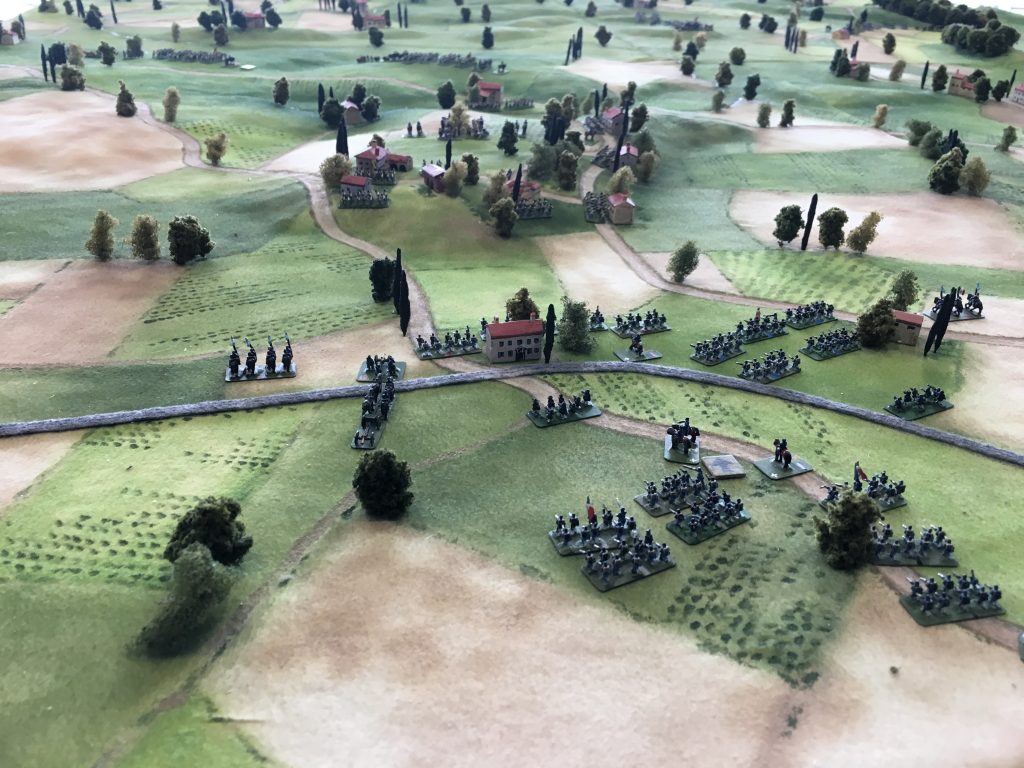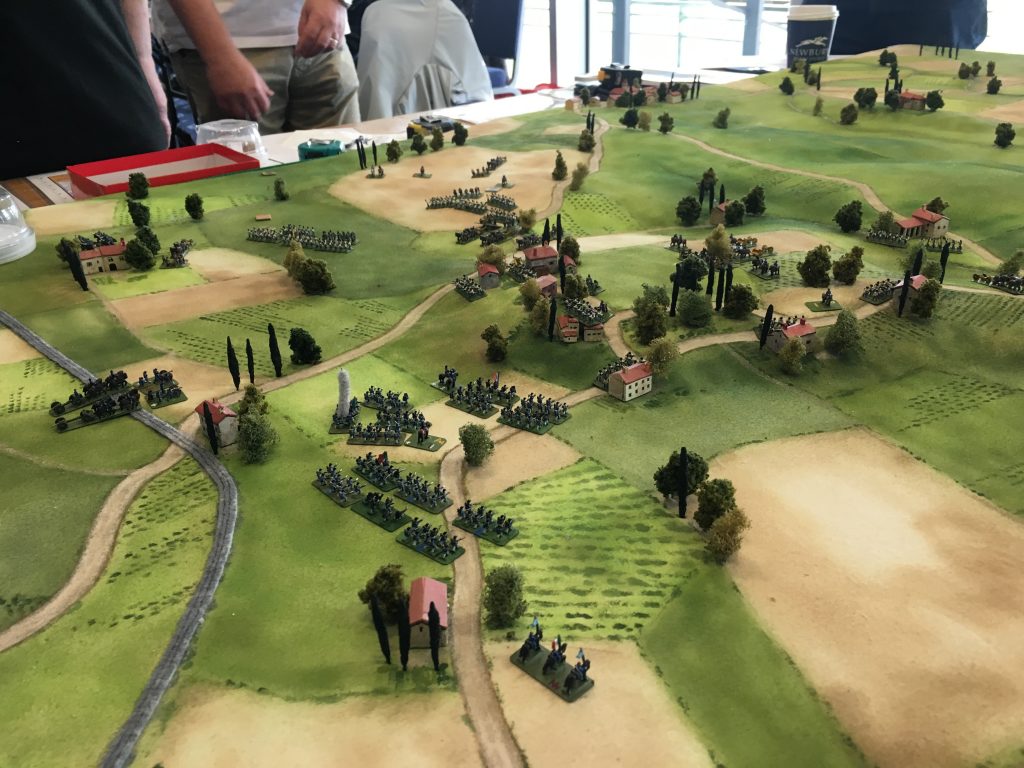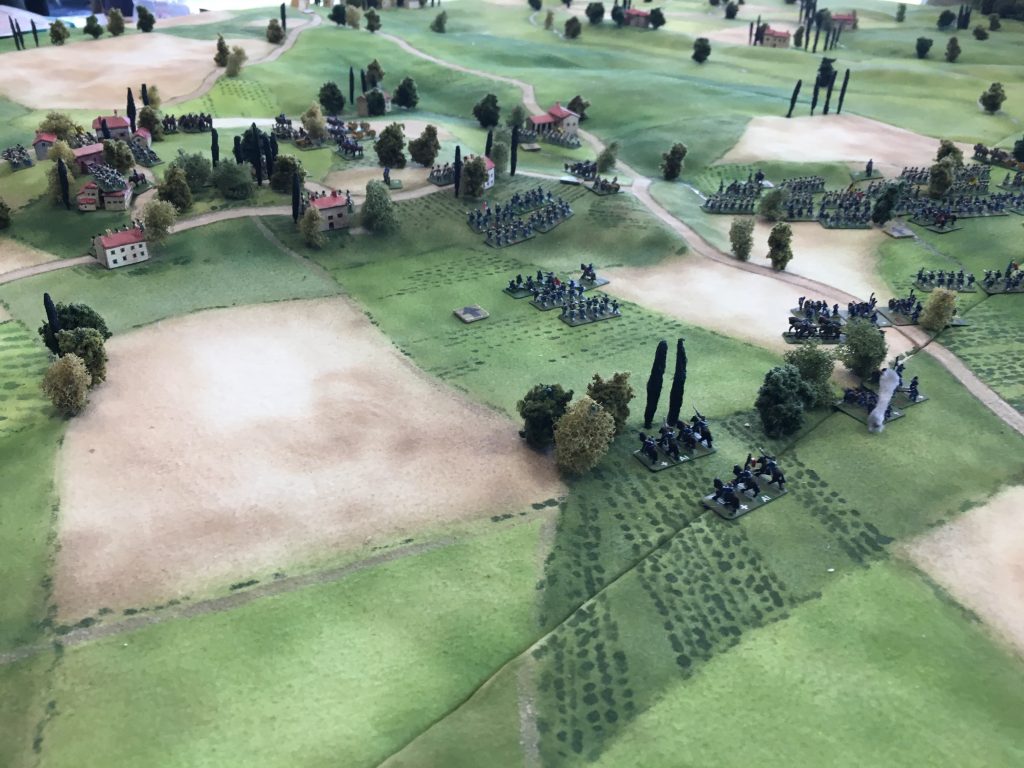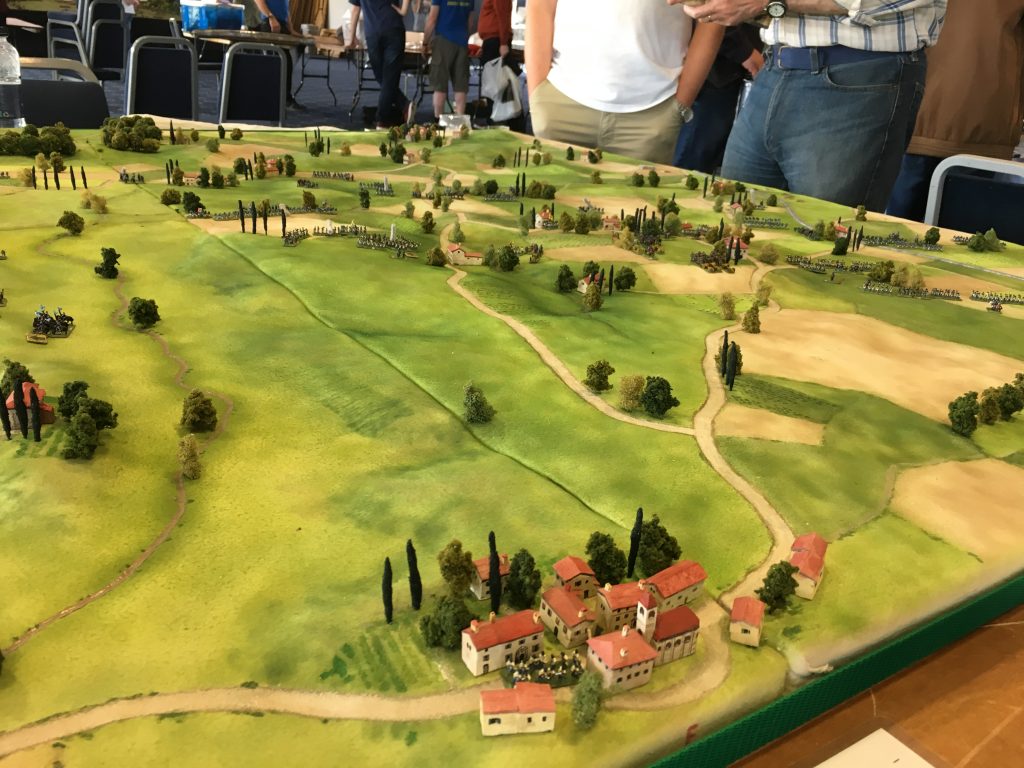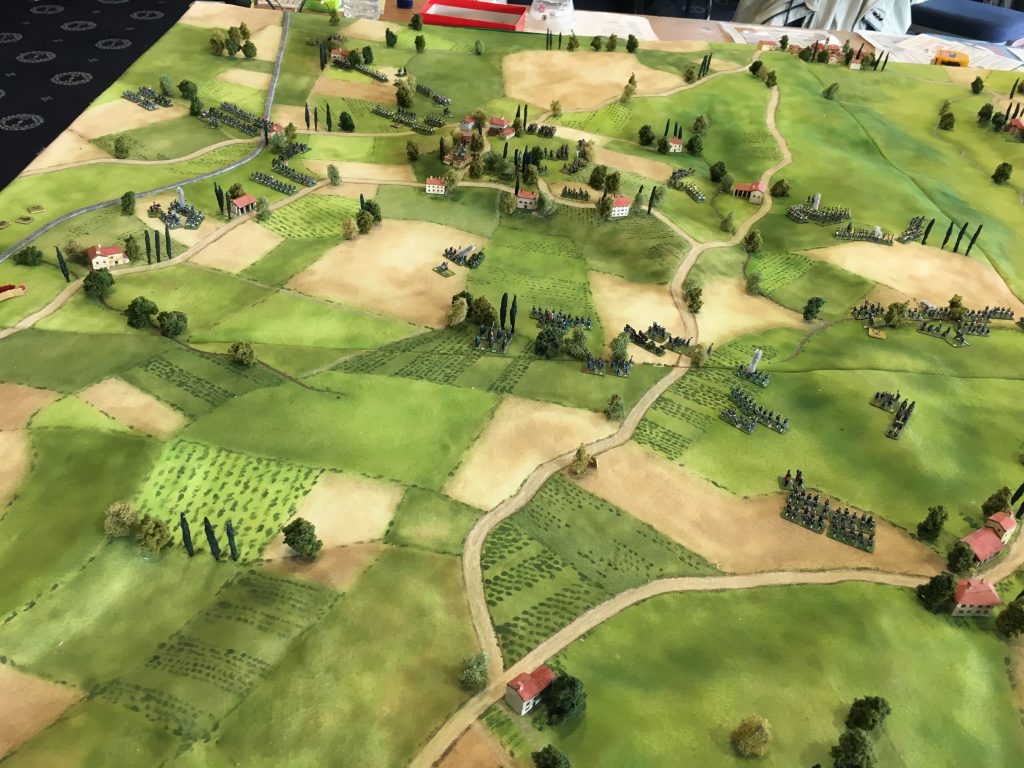
I began 2023 determined to focus on completing projects already started, my Napoleonics in particular. This didn’t last long, as I worked on reviving my Great Northern War armies and developing a rule system to use them. That show is now done. I have now decided to start a brand new period in a brand new scale. What is going on?
The main thing I hadn’t reckoned on was a revival of my actual gaming. I’m now part of a monthly “club” of half a dozen players from my old club, South London Warlords, that meet in the home of one us. I need games that are conducive to this format. I am also in the process of joining a more local club in Tunbridge Wells. Where that will lead I’m not sure – but that I will need material ready for the club game format. I can put on a game of Lasalle 2 readily enough with my Napoleonics – but these rules are unfamiliar to my fellow gamers. And I hesitate to suggest that they buy a rather pricey rules booklet. These published rules aren’t easy to scan to distribute, even if that was legal – and the clever activation system is a bit awkward in a multiplayer format.
I have been eyeing European wars of 1859 to 1871 for some time. I have been buying Bruce Weigle’s rules, playing the odd game with my friend George, leading up to participating in an 1859 game (part of Solferino) led by Bruce himself at Newbury in 2019. I am also owner of Chris Pringle’s Bloody Big Battles rules for the period, and tried to adapt them to the Napoloenic era – and acquired his extended scenario book. In addition, I have wanted to try out 10mm miniatures. It then struck me how suited this period is to the multiplayer format. On the battlefield the army command function had comparatively little influence, with corps and divisional commanders playing a more decisive role on the day (the army commander doing more to set the day up). Historically it is a very interesting period, marking the transition from smoothbore to rifled to breech-loaded infantry weapons and artillery. The battles were mainly between well-trained regulars, and the short wars meant that there was comparatively little of the complexities of attrition (until 1871, anyway). This makes the wars cleaner than the overlapping American Civil War, as well as the armies being a bit more interesting to look at, including the continued use of shock cavalry.
Three ideas converged. The first is that I wanted to play the battle of Custoza in June 1866. This was a close fought battle between the Austrian army and the Italians – and an interesting counterpoint to the disasters faced by the Austrians to the north against Prussian needle-guns. The second was that I wanted to try 10mm figures. My much loved 18mm Napoleonics are bigger than ideal for big battles, and I find 6mm (which I use for GNW) a bit wee. I wanted to see if I could get 10mm figures table-ready quickly by streamlining the painting process. Third I wanted to try basing figures 30mm by 20mm. My Napoleonics are on 25mm square bases, and my GNWs are on 20mm squares. These look fine when combined into multi-base units. Oblong bases look better when on their own – which they are for Bruce Weigle’s system, for example. This base size looks good for 6mm troops, and I thought they’d work well for 10mm too.
Perusing the Pendraken website, I saw that they did Italians for the period in 10mm. That tipped me over the edge and I made an order, to see how they looked. And I was off. There was a big psychological release being involved in a brand new project in a new period – one not weighed down by questionable decisions on scale and basing made long ago. I now understand why so many gamers do it so often, notwithstanding having failed to complete earlier projects. I have acquired a number of books, and I’m researching the history eagerly. My initial aim is to mount a game for Custoza. The starting point is the BBB scenario for the battle. BBB rules are perfectly workable (I think they work much better for this era than Napoleonics) – but they are still rules for smaller scales being made to work for big battles, with a rather artificial feel in that context. This criticism can’t be made of Bruce Weigle’s system (the 1871 rules adapted for earlier periods – which is what we used in Newbury) – which in particular allow bases to move individually without being forced into constrained base-to-base formations. But these rules aren’t really suitable for the sort of game format I’m planning – they’ll take too long. Besides they are designed for rather smaller battles (there is a Custoza scenario, but it doesn’t cover the whole field for the whole battle). So, fresh from success with my Carolus Rex GNW rules, I’m looking to make my own.
How about the Italians? I bought a Pendraken “army pack” with 90 infantry figures, 30 command figures, 30 Bersaglieri, 15 cavalry and 3 guns. Unfortunately they sent me the 1849-59 version, not the 1859 to 1866. The infantry were in tunics rather than greatcoats, the cavalry were dragoons rather than light cavalry, and I had grenadiers in place of Bersaglieri. I decided I quite liked to the look of the earlier infantry, and the dragoons were nice, and perfectly usable, too. The grenadiers were the main problem – but Pendraken were happy to send me a pack of Bersaglieri (they offered to replace the whole order, of course). So what I have is more an 1859 army than an 1866 one. Since 1859 is on the more distant agenda, that’s not a worry.
The next question was how many figures to put on a base? My first thought was 10 infantry or four cavalry. There is room. But then I thought I could get away with 8 and three respectively – since looser formations were starting to be used in this era. I mounted all the line infantry at 8 to base, except one flag base with 10, to see how it compared. For the Bersaglieri I put then five to a base. This is the result (with the 10-figure flag base):

I made up three groups of four line infantry bases and one Bersaglieri, 15 infantry bases in all. Unfortunately I think the denser basing looks better – and illustrations from the era often show dense deployments. My plan is to mount my next batch, which will be Austrians, at 10 to base (or 5 or 6 jagers),and see how they look en masse. The Austrians particularly favoured dense formations anyway. The flags, incidentally, are from Pendraken. Given the general dullness of the troops (many wore greatcoats in the filed), the flags are an important feature. The Pendraken flags are quite basic, but do the job. They don’t do cavalry flags though, which might be a problem. Talking of cavalry, here they are:

These represent “line cavalry” or dragoons – the nearest the Italians had to elite heavy cavalry, of which they had four regiments. I have representatives from two regiments. A denser basing would be justified here too – but the pack size is 15, one short of what I need for four bases. Since I will (probably) be operating the cavalry in brigades of two or four bases, life is going to be harder if I can’t get four bases out a pack. With three to a base I might even get and extra base. With the cavalry present only in small quantities, that proved decisive, and I will stick to three figures a base – the look is perfectly satisfactory. Here’s the artillery:

These are 8-pounders, the typical Italian artillery piece, which were rifled in 1866 (but not in 1859). They look distinctly like Napoleonic smoothbores to me, but Leon from Pendraken assured me that he did research them, and I know no better. Reliable information on the Italian army of the era is hard to come by, and I’m very thankful that Leon took the job of producing this range on. I have found little consistent information on the line infantry. The Osprey, which covers the topic only briefly, has no pictures of standard line infantry of 1866 – or the Piedmontese army from before. Pendraken supply four crew figures for each piece but I didn’t like one of them. I thought I might reserve four crew figures for heavier weapons.
I will leave description of how I have prepared these figures to another post, when my Austrians are done. My hope is that I can get these troops table-ready quickly. Much more quickly than my 18mm troops, and even the GNW 6mm ones. The jury is out on that. The uniforms are quite simple, and the figures small enough not to need much detailing. Piping and braid need not be attempted! Even the black facings on the Italian infantry present so little contrast to the dark blue coats that I didn’t attempt it. The Austrians wore their greatcoats in the field (removing the tunics underneath in warmer weather), which will be just as simple. This batch of 15 infantry bases, four cavalry and three artillery took a bit longer than I hoped though. I will need over 70 bases of Italians alone if I follow the BBB scenario. I think I will try bigger batches, but of one troop type. This will be pretty boring, but hopefully faster. For the first Austrians though I will do a similar mixed batch, though.
